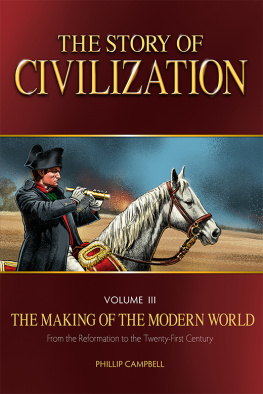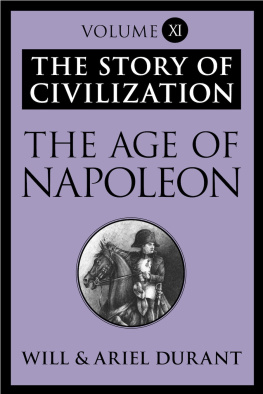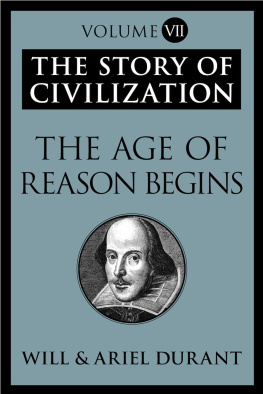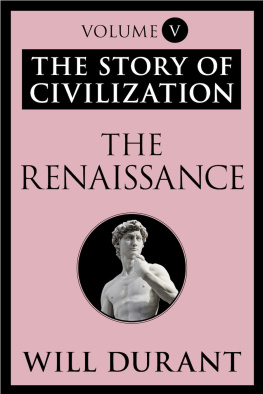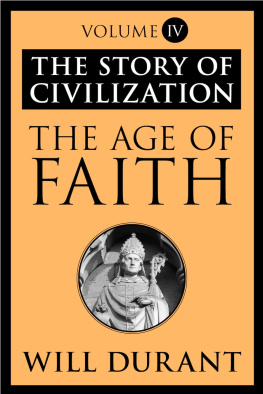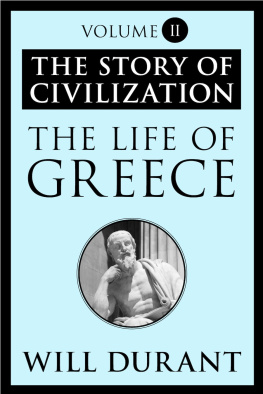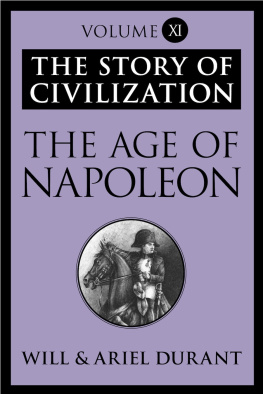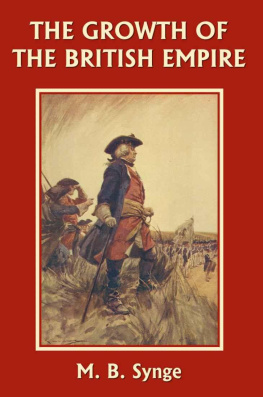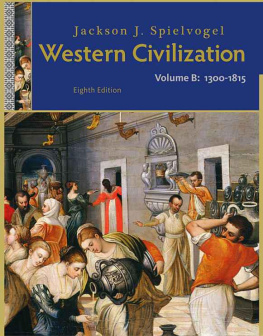
THE STORY OF
CIVILIZATION
VOLUME III:
THE MAKING OF
THE MODERN WORLD
THE STORY OF CIVILIZATION
Volume I: The Ancient World
Text Book
Test Book
Teachers Manual
Activity Book
Audio Dramatization
Video Lecture Series
Timeline
Volume II: The Medieval World
Text Book
Test Book
Teachers Manual
Activity Book
Audio Dramatization
Video Lecture Series
Timeline
Volume III: The Making of the Modern World
Text Book
Test Book
Teachers Manual
Activity Book
Audio Dramatization
Video Lecture Series
Timeline
THE STORY OF
CIVILIZATION
VOLUME III:
THE MAKING OF
THE MODERN WORLD
FROM THE REFORMATION TO THE TWENTY-FIRST CENTURY
Phillip Campbell

The Story of Civilization: Volume III, The Making of the Modern World 2018 Phillip Campbell.
All rights reserved. With the exception of short excerpts used in critical reviews, no part of this work may be reproduced, transmitted, or stored in any form whatsoever, printed or electronic, without the prior written permission of the publisher.
Cover and illustrations by Chris Pelicano
ISBN: 978-1-5051-0982-5
Published in the United States by
TAN Books
P.O. Box 410487
Charlotte, NC 28241
www.TANBooks.com
Printed and bound in the United States of America
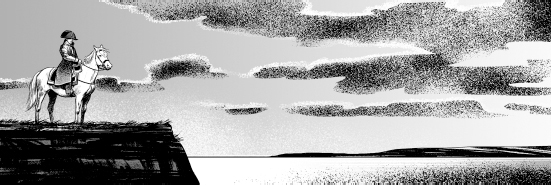
CONTENTS
There can be no doubt that the central claims of the Christian faith are deeply intertwined with historical eventsa Christian ignorant of history is a Christian without any sense of his own identity. Nevertheless, ignorance of our past has never been more widespread among educated westerners than it is today; despite the technological marvels of modernity, the post-Christian West has lost its memory and thus stands in danger of losing its very soul.
As with all educational problems, this crisis has its foundations in childhood education, which has moved resolutely over the past three decades away from teaching history in the traditional sense, substituting the social sciences and mere cultural exposure in historys place. In many school curricula for children, the only appearance history makes is as a form of triviaarbitrary facts about far-away times and places that are unlikely to make a radical impact on the young students understanding of the world and his place in it. Catholic children are left without a robust sense of identity as Catholics; instead, the media and prevailing culture fill the vacuum, providing students with, at best, a poor understanding of their Churchs history and of the civilizations and societies shaped by Catholic culture.
Thus there is a tremendous responsibility imposed on the Catholic parents and educators of today. I would even argue that they are tasked with providing historical training as surely as they are tasked with providing moral and religious formation. Without the former, the latter will always rest on an imperfect foundation, for a young person without a proper historical education is liable to be swept away when confronted with false or tendentious narratives or with slanders against the history of the Church.
False historical narratives are not far to seek; in fact, many of them are embedded in the fabric of our culture, saturating our minds with prejudices and preconceptions that are hostile to our Church and its traditions and hostile to historical fact. The prevalence of anti-Catholic historical narratives is especially marked in the English-speaking world, where the legacy of Reformation-era propaganda and confessional history is enduringly anti-Catholic. The crude slanders of John Foxe in his sixteenth-century Book of Martyrs gave way, over the centuries, to the more sophisticated (and more decidedly anti-Christian) rationalism of Edward Gibbon in the eighteenth century and to the casual, socially respectable anti-Catholicism of Henry Charles Lea in the nineteenth. English-language historiography is thus leavened with anti-Catholicism in a way that has unavoidably influenced English-speaking Catholics. One can detect the echoes of this tradition even today, as many otherwise fine school textbooks retain an anti-Catholic tone, even to the point of including myths that have been long since debunked by professional historical scholarship.
Outside the English-speaking world, moreover, the aggressive secularism of our time has taken a similar toll, even in countries that were devoutly Catholic in their former days. Famously, the 2004 proposed constitution for the European Union neglected to mention Christianity at all, even among the historically shared values of Europeans. Thus we live in a time of great need; parents and educators have to be able to turn somewhere for materials to educate their children on the history of the Western world.
Into this gaping breach steps TAN Books, which for decades has been fighting a lonely and increasingly desperate battle against the misinformation about the Church that dominates the press and the airwaves. Over the years, TAN has sought to publish both new works and reprinted classics on Catholic devotional life, dogma, liturgy, theology, and history. Now TAN has accepted a new challenge in response to the needs of the time: providing the materials that homeschooling parents desperately need. I can personally attest to the timeliness of TANs new mission; as a homeschooling father, I know how hard it can be to find materials that are trustworthy, intellectually stimulating, and engaging for children. Phillip Campbells The Story of Civilization series is all of the above and more. Both he and TAN deserve enormous praise for bringing this project to fruition. More so than any other academic field, history has had an unfulfilled need for materials of this kind for many, many years.
Here in volume 3, you possess a work of ambitious scope, as Phillip Campbell takes the reader from the turmoil of early modernity all the way down through contemporary European history, emphasizing the connections among the great movements and developments of the period.
Momentous change characterizes the European experience of early modernity: The rise of Renaissance humanism, the Age of Discovery, and the shattering of Europes medieval religious consensus transformed society in a myriad of ways that resist easy summary and were, moreover, not confined to Europe itself. During what historians call the long sixteenth century (14921648), new continents were opened up to European exploration, while new intellectual and religious vistas were explored in the Old World with various consequences, none of them small. The Protestant Reformation transformed more than just religious culturepolitics and economics would never be the same. Moreover, as historian Brad Gregory has argued, Protestantism gave rise to an unintended reformation as the intellectual culture of European elites became decidedly and increasingly secularized. Old movements were replaced by new as the Enlightenment and secular nationalism transformed European outlooks in the eighteenth and nineteenth centuries, ultimately giving rise to the great wars of the twentieth. Through it all, Catholic religious culture remained vibrant and innovative, responding to new challenges in the complex ways demanded by the times. In the next several hundred pages, your children will encounter all this and more and be awoken to the wonder and excitement of history.

